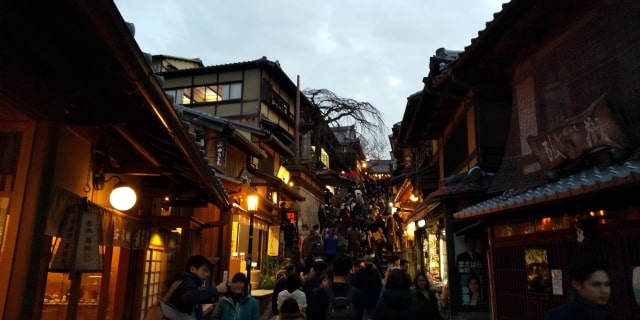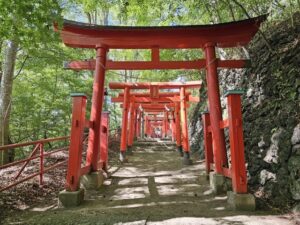In recent years, Japan’s tourism industry has flourished, with millions of visitors flocking to cities like Kyoto to experience its rich history and culture. However, this surge in tourism has given rise to a phenomenon known as overtourism, where the sheer volume of visitors overwhelms local communities and natural resources. One area particularly affected is Kyoto’s historic temples, including Kodaiji Okabun-in, where the negative effects of overtourism are increasingly being felt. This article will explore the current state of overtourism in Japan, the government’s response, and whether more destinations may start refusing tourists in the near future.
What is Overtourism?
Overtourism occurs when the number of visitors to a particular destination exceeds its capacity, leading to a degradation of the local environment, culture, and the quality of life for residents. In Kyoto, famous for its ancient temples and serene landscapes, overtourism has become a significant concern. The constant influx of tourists disrupts the daily life of locals and tarnishes the cultural experience for both visitors and residents.
Temples like Kodaiji Okabun-in have seen an influx of visitors that has altered the atmosphere of what were once peaceful sanctuaries. Instead of being places for quiet reflection, these temples now often struggle with overcrowding, noise, and litter, detracting from their historical and spiritual significance.
The Impact of Overtourism at Kodaiji Okabun-in
Kodaiji Okabun-in, a historic temple in Kyoto, is a prime example of how overtourism has impacted local landmarks. The temple has long been a place of tranquility, but with the growing number of tourists, the area surrounding the temple is frequently packed with visitors. Traffic congestion, overcrowded streets, and noise have become everyday issues. Moreover, the behavior of some tourists, such as improper disposal of waste or disrespecting temple grounds, has caused concern among locals and temple authorities.
As Kyoto overtourism continues to rise, these temples are finding it increasingly difficult to maintain their historical atmosphere. While tourism brings in much-needed revenue, it also threatens the very cultural heritage that attracts visitors in the first place.
Did Increased Tourism Benefit Japan?
The initial push to increase tourism in Japan, particularly in the lead-up to the Tokyo 2020 Olympics, was seen as a major economic success. Kyoto, being one of the most popular tourist destinations, reaped the benefits through increased business for local shops, restaurants, and hotels. However, these benefits came with a cost.
As visitor numbers grew, so did the strain on Kyoto’s infrastructure and cultural sites. While businesses may have profited, local residents faced growing inconveniences such as overcrowded public transport, rising property prices, and a decline in the overall quality of life. The question remains: did the economic gains from tourism outweigh the negative impact on daily life and cultural preservation?
Government Response to Overtourism
The Japanese government has been aware of the overtourism issue and has taken steps to mitigate its effects. For example, authorities in Kyoto have launched initiatives to promote less-visited areas and encourage tourists to travel during off-peak seasons. Campaigns have also been introduced to educate visitors on appropriate behavior and respect for cultural sites, urging tourists to “follow the rules” while enjoying Japan.
One initiative includes a smartphone app that helps tourists avoid crowded areas by suggesting alternative routes or less-popular attractions. Additionally, public transportation campaigns encourage visitors to use buses and trains to reduce traffic congestion around temples like Kodaiji Okabun-in. These efforts, however, have had mixed results, and overtourism remains a pressing concern.
The Future: Will More Tourist Destinations Refuse Visitors?
In response to the challenges posed by overtourism, some destinations in Japan are beginning to consider limiting or even refusing visitors. Some temples and shrines in Kyoto, including Kodaiji Okabun-in, have discussed imposing restrictions on visitor numbers or introducing a reservation system to control crowd size. Such measures aim to protect cultural assets while ensuring a more enjoyable experience for those who do visit.
The idea of reducing the number of tourists might seem counterintuitive, but many local communities are prioritizing the preservation of their culture and environment over short-term economic gains. If overtourism continues unchecked, more destinations across Japan may follow suit, closing off areas or severely limiting access to protect their heritage.
Enjoy Japan: Follow the Rules for a Better Experience
To truly enjoy the beauty and culture of Japan, visitors need to respect the rules and customs of the places they visit. Overtourism not only damages the environment and local culture but also affects the overall experience for travelers themselves. If you want to fully appreciate places like Kodaiji Okabun-in, it’s essential to follow local guidelines: avoid visiting during peak hours, respect the tranquility of temples, and be mindful of your environmental impact.
Responsible tourism is key to preserving the places that make Japan so special. By following the rules and being considerate of locals, tourists can help reduce the impact of overtourism while still enjoying everything Japan has to offer.









Comments